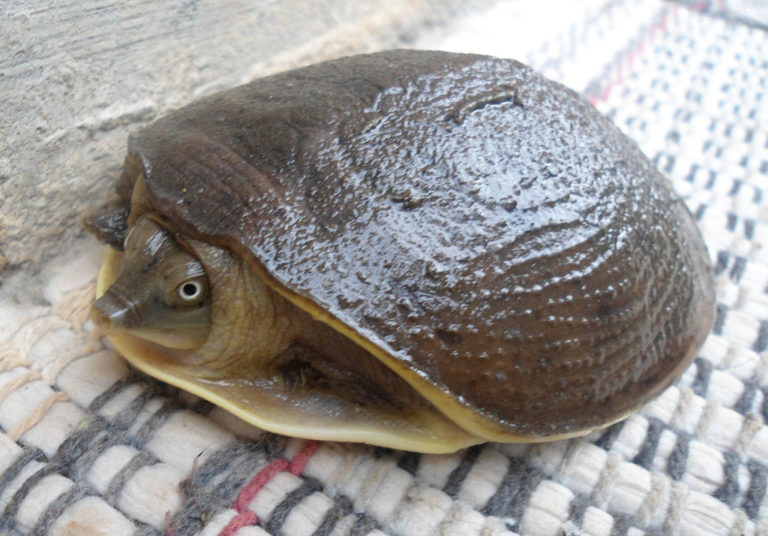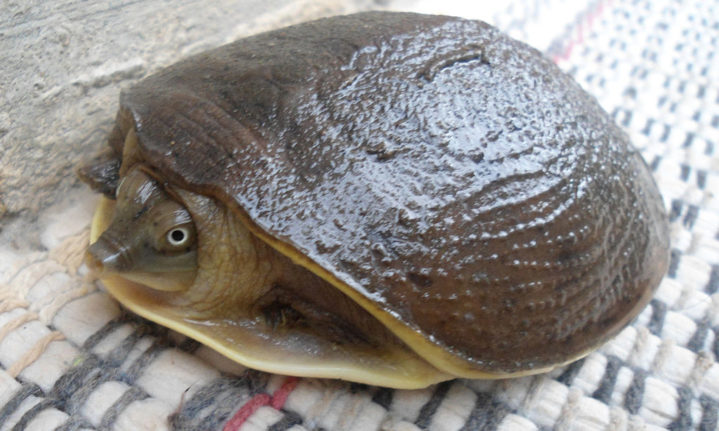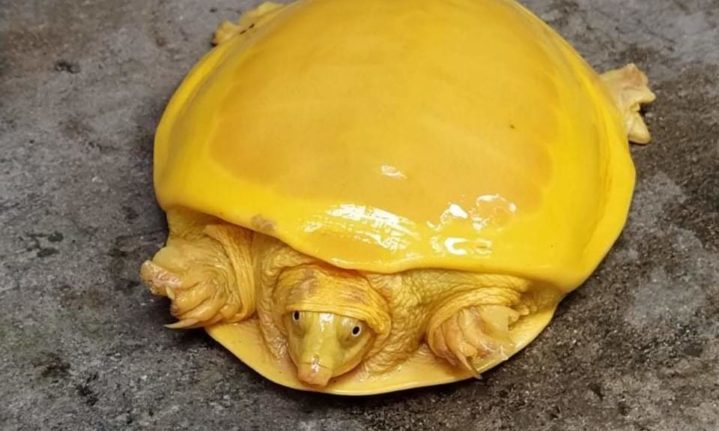A bright-yellow turtle was recently rescued from a fisherman’s net in Burdwan in the West Bengal state of India. This was the second time in three months that the Indian Forest Service has discovered a different-coloured flapshell turtle.
‘The fisherman had spotted the turtle trapped in a net and informed our staff,’ said VK Yadav, the Chief wildlife warden to the Times of India. ‘A few years ago, I had personally clicked pictures of a yellow flapshell turtle in Howrah.’
Yadav said that the turtle has already been released into a river.
Today a Yellow Turtle was rescued from a Pond in Burdwan,WB. It’s one kind of a rarely occuring Flapshell Turtle. @ParveenKaswan @SanthoshaGubbi @RandeepHooda @rameshpandeyifs pic.twitter.com/enTyNAkxmP
— Debashish Sharma, IFS (@deva_iitkgp) October 27, 2020
The programme director of Turtle Survival Alliance (TSA) in India, Shailendra Singh said that the yellow colour of the flapshell turtle is the result of pigmentation loss due to genetic mutation. ‘In such cases, genes that are responsible for natural colour and pattern of an animal get mutated,’ he said.
Singh also added that this was not the first time a yellow flapshell turtle has been spotted. ‘In 2019 and 2020, we found records of yellow flapshell turtles in Uttar Pradesh [a northern state of India], too.’
These colour aberrations are rare in nature but the yellow turtle phenomenon is more common than commonly thought, according to Science Alert.
In July, when the first yellow turtle this year was spotted and went viral, social media users marvelled at the ‘rare’ animal and produced a flurry of jokes. However, Indian herpetologists explained that ‘this is not a rare phenomenon’ in a tweet.
The Indian Flapshell turtle (Lissemys punctata) is one of the most common softshell turtles found in India. There have been multiple reports of albino or leucistic individuals from across India. This is not a rare phenomenon… (1/3) https://t.co/QGyarOmJhm
— FTTFIndia (@FttfIndia) July 20, 2020
Close snap of the same. Mark the pink eyes, one indicative feature of albinism. pic.twitter.com/MfXrXVYbfH
— Susanta Nanda IFS (@susantananda3) July 20, 2020
As Singh of the TSA said, the yellow-colouration is most likely caused by a lack of body pigmentation. Science Alert, says the phenomenon is similar to pure albinism, which is a genetic disorder that causes a complete lack of pigments in the body, ‘but instead of showing up completely white, in certain cases, yellow pteridine pigments can survive to dominate colour production (along with eye pigments).’
This is known as chromatic leucism, which can make turtles appear in the most ‘dazzling’ colours, according to researchers.
The novelty of these turtles’ colours might pique the interest of social media users or the pet trade but it is quite burdensome in nature.
‘For instance, a normally coloured [flapshell turtle] is much better camouflaged in the murky, greenish, aqueous environment the species frequents than a gold-coloured individual,’ say researchers.

A ‘normal coloured’ Indian flapshell turtle. Picture: Wikimedia Commons
Picture: Twitter/@deva_iitkgp

















